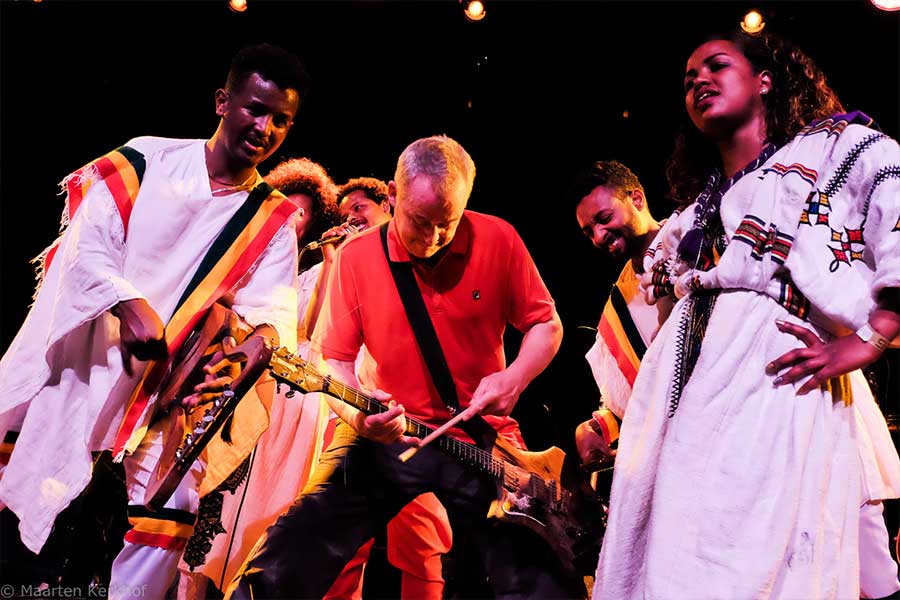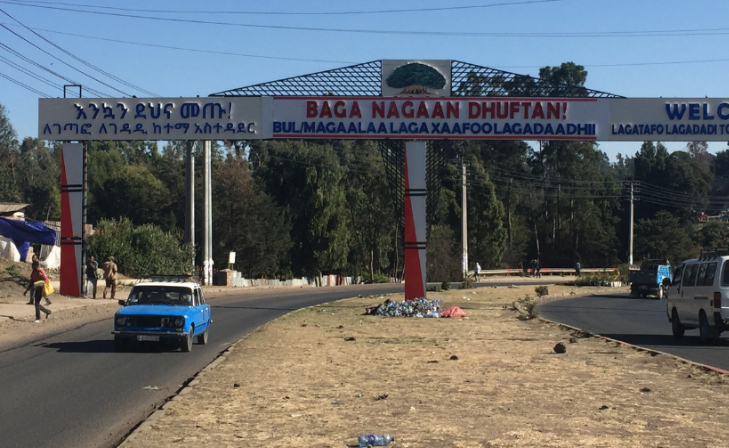
Mar 25 , 2023.
At a crossroads, Addis Abeba finds itself on the precipice of monumental transformation. Nearing four million residents (the World Bank puts it at 4.8 million), the bustling city boasts a young, relatively educated, and literate population fueling its economic growth. The city's demographic evolution speaks to a place in transition, teeming with opportunities for expansion, rooted in its cultural heritage and historical significance.
However, the challenges of housing shortages, traffic congestion, and limited access to essential services threaten the quality of life for its inhabitants.
Addis Abeba's growth has outpaced its infrastructure, with housing expansion and pollution not adequately accounted for in the design. The city's water supply and distribution system has reached a breaking point. As water resources become overdrawn and capacity dwindles, domestic, industrial, and commercial waste only compound the issue. Water governance and a convoluted web of institutions suffer from a lack of coordination and integration, further exacerbating the crisis.
With per capita water consumption at a mere 150 litres—well below the international average of 200 litres—Addis Abeba's water demand far outstrips its supply. Rapid population growth, inefficient supply and distribution systems, and poor conservation practices contribute to the burgeoning water crisis. The city's annual water supply, sourced primarily from Dire (40 million cubic metres), Legedadi (47 million), and Gefersa reservoirs, falls dramatically short of the demand exceeding 150 million cubic meters annually.
The World Bank and the Africa Development Bank (AfDB) have been at the forefront of helping the city administrations overcome their challenges in quenching the thirst of residents. In the 90s', the World Bank supported a project for improving efficiency and increasing water supply and sanitation services, building treatment plants, distribution networks, and storage facilities.
The Bank paid for three phases of a water supply and sewerage project initiated in 2010. It focused on increasing water production capacity, expanding the distribution network, improving wastewater treatment, and enhancing management and operations. Under this project, a water treatment plant was built in the Akaki River Basin. Three years later, the oldest dam on the Gefersa River was rehabilitated; and in 2018, reservoirs, pumping stations, and distribution networks were built in Koye Feche area.
Funded by the AfDB, a supply and sanitation program launched in 2008 aimed at expanding the supply network and improving sanitation infrastructure.
However, a study conducted a few years ago revealed that, despite these and other investments in water infrastructure and a 48.4pc increase in water supply since 1996, demand has skyrocketed by 231pc over the same period. Population growth, urbanization, and industrialization are the main drivers of this escalating demand. The capital's population has swelled over the years, with a recent influx of migration of those fleeing conflicts in various parts of the country.
This influx has stressed the city's water supply, as more people need access to this vital resource.
Addis Abeba's youthful population, with the 15-29 age group comprising 32pc of the total, is more likely to consume water intensively than other age groups. The number of households in the city has steadily increased, with over 1.5 million homes registered. This growth further strains the water supply as more households require access to clean water.
The study also highlighted significant disparities in water distribution across the city.
Another study published in the journal "Water" in 2018 found that the water supply coverage was 85pc. Around 40pc of the water supplied to the city was lost due to leaks and breakages in the distribution system. This same study estimated that the service was intermittent, with only 10pc of the residents receiving a continuous supply. It highlighted that water rationing is common, with some areas receiving water only a few days a week while others lack access to piped water.
Another study conducted three years earlier discovered significant disparities in water distribution between the city's different areas. The highest connection density was in the Arada branch of the Addis Abeba Water & Sewerage Authority (AAWSA), while the lowest was in the Nefas Silk branch. Analyzed through a consumption ratio for a population size and household numbers, Gulele, Nefas Silk Lafto and Lideta districts stood out as the highest consumers. Per capita consumption for population size in Gulele was 93.6m³, followed by Nefas Silk (91.4m³) and Lideta`s 89.1m³. Computed for household consumption, Gulele had 394.1m³, Nefas Silk Lafto (366m³) and Lideta (282.5m³).
The disparity in water supply and consumption paints only part of the picture. The water supply efficiency ratio for the year the data was collected revealed that only 78.7pc of the maximum water supply capacity was utilized. Of the water supplied, 45.7pc was lost due to leakages and illegal connections, and a mere 34.1pc of the potential water use was utilized.
In response to these challenges, Addis Abeba's leaders must adopt a holistic approach encompassing investment in water infrastructure, demand-side and water resource management, and governance reform. Their responsibility is to ensure equity, a sustainable environment, and economic efficiency in the management and use of water resources.
The AAWSA, the sole agency for water supply, should embrace an integrated approach to water resource management, addressing water depletion through catchment management and land use change control. Measures must be taken to prevent unlicensed private wells from competing with production wells. The Authority should conduct a comprehensive inventory of all boreholes in the city to maintain accurate and up-to-date data for proper planning.
Alternative water sources, such as rainwater harvesting and recycling wastewater, should be explored for non-potable uses. By improving efficiency in the water distribution system, AAWSA can shift from an engineering-based supply-side model to a technology-based demand-side management approach. Using digital water meters, leakage detectors, and state-of-the-art technologies can help combat the inefficiency that undermines the system, depriving residents of a vital provision for life.
Addis Abeba's water crisis is complex and requires a multi-faceted and comprehensive approach. By investing in water infrastructure, implementing demand-side and water resource management strategies, and reforming governance, the city's leaders can ensure a more equitable and sustainable water supply for residents. As the city continues to grow and evolve, addressing these challenges will be paramount to maintaining the quality of life.
Upgrading and expanding the city's water infrastructure is crucial.
Addressing these issues also requires significant investment in new dams on the Sibilu and Gerbi rivers, located northwest of the capital. These projects, which have been stalled for several years due to lack of financing, could supply three times more water than the Authority provides daily.
An efficient water management plan is vital, emphasising demand management, equitable distribution, and water conservation. This entails fixing leakages, expanding storage capacity, and constructing new water distribution networks. Concurrently, public awareness campaigns can instil a culture of conservation, encouraging practices such as water waste reduction, greywater reuse, and the adoption of water-efficient appliances. This needs a robust regulatory framework and enforcing compliance to curb water wastage and pollution.
Adopting Integrated Water Resources Management (IWRM) principles can balance competing water demands and promote sustainable use by considering social, economic, and environmental aspects. Considering population growth, urbanisation trends, and future climate scenarios, a long-term water security strategy is vital for Addis Abeba's water security.
Investing in climate-resilient water infrastructure can help the city adapt to climate change impacts. This includes designing infrastructure to withstand extreme weather events and planning for future climate scenarios. Enhanced wastewater treatment facilities will reduce pollution and improve water quality while promoting the reuse of treated wastewater for non-potable purposes, such as irrigation and industrial uses.
PUBLISHED ON
Mar 25,2023 [ VOL
23 , NO
1195]

View From Arada | May 23,2020

Commentaries | Nov 11,2023

View From Arada | Sep 10,2023

Fortune News | Feb 29,2020

Fortune News | Jan 05,2019

Fortune News | Apr 26,2019

Fortune News | Jul 11,2021

Radar | Dec 05,2018

Fortune News | Oct 02,2021

Fortune News | Feb 16,2019

My Opinion | 131673 Views | Aug 14,2021

My Opinion | 128039 Views | Aug 21,2021

My Opinion | 126001 Views | Sep 10,2021

My Opinion | 123622 Views | Aug 07,2021

Dec 22 , 2024 . By TIZITA SHEWAFERAW
Charged with transforming colossal state-owned enterprises into modern and competitiv...

Aug 18 , 2024 . By AKSAH ITALO
Although predictable Yonas Zerihun's job in the ride-hailing service is not immune to...

Jul 28 , 2024 . By TIZITA SHEWAFERAW
Unhabitual, perhaps too many, Samuel Gebreyohannes, 38, used to occasionally enjoy a couple of beers at breakfast. However, he recently swit...

Jul 13 , 2024 . By AKSAH ITALO
Investors who rely on tractors, trucks, and field vehicles for commuting, transporting commodities, and f...

Jun 29 , 2025
Addis Abeba's first rains have coincided with a sweeping rise in private school tuition, prompting the city's education...

Jun 29 , 2025 . By BEZAWIT HULUAGER
Central Bank Governor Mamo Mihretu claimed a bold reconfiguration of monetary policy...

Jun 29 , 2025 . By BEZAWIT HULUAGER
The federal government is betting on a sweeping overhaul of the driver licensing regi...

Jun 29 , 2025 . By NAHOM AYELE
Gadaa Bank has listed 1.2 million shares on the Ethiopian Securities Exchange (ESX),...